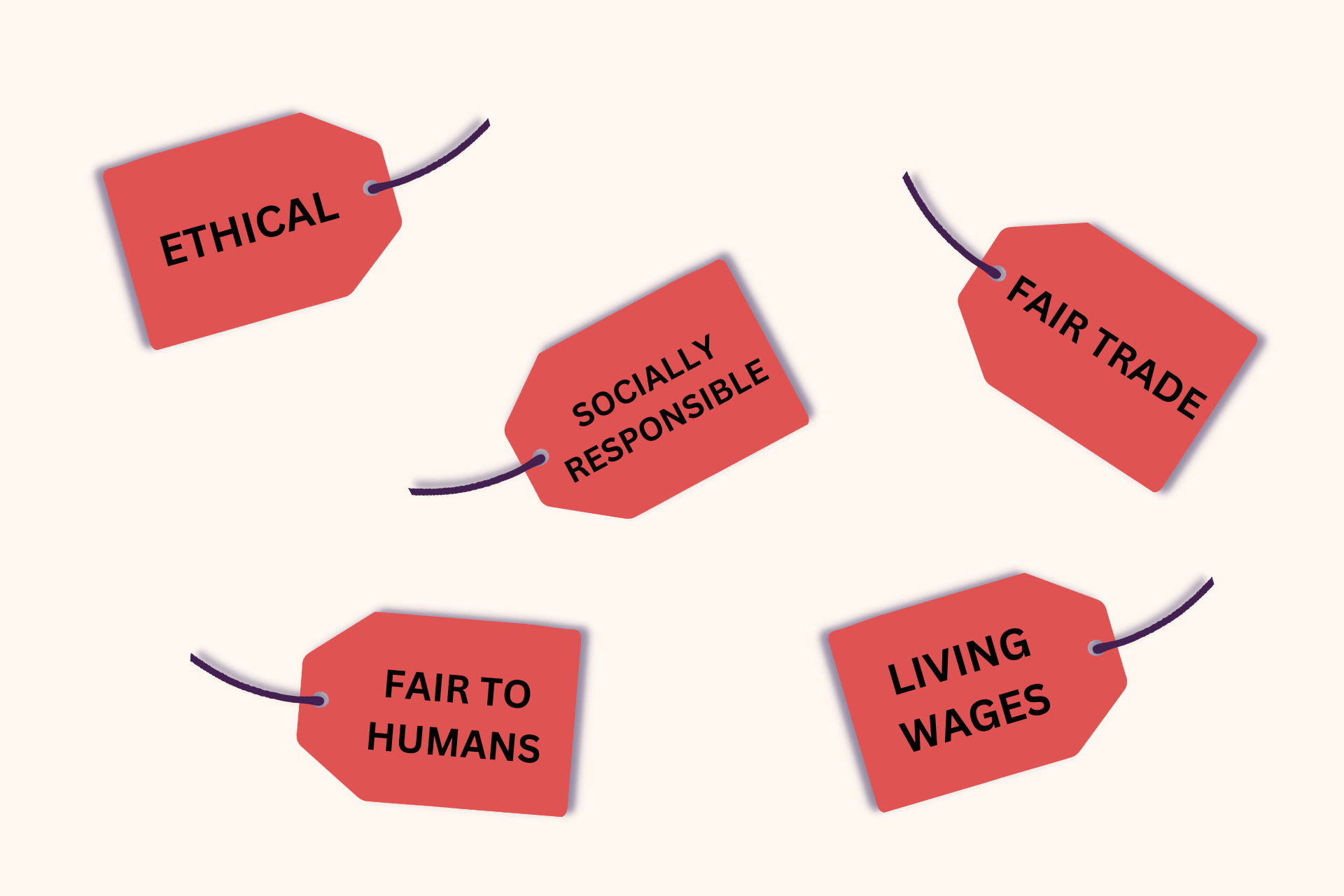The year ahead may be unpredictable but we can say with certainty that sustainable fashion is going to keep making an impact. Here are some of our predictions for the industry over the coming year.
Single-material clothing
We like to think we know a few things about recycling clothing. After all, you can send back clothes you buy from POMP to be recycled using the QR code on our labels. We’re able to recycle more easily than others because our clothes are made from 100% organic cotton. But it is far more difficult to recycle an item of clothing that is made from 99% organic cotton and 1% something else. The EU is looking to bring forth legislation that will affect clothes labelling and as part of this process it is assessing how recyclability is enhanced by having clothes made from a single material.
As the legislation will affect all those who sell into the EU, some firms have already started to adapt the material mix of their clothing lines. We expect the initial trickle of activity to expand into a fully-fledged trend towards single material clothing as companies not only seek to become compliant but to also make progress surrounding their sustainability goals.
With the speed at which technology advances, it’s difficult to predict how efficiently companies will be able to separate polyester and synthetics from organic fibres. If it's becoming possible for us to talk to Als and get them to create images for us, this technology might yet have some part to play in the future of fashion. In fact, there are already some early-stage companies like Sortile using AI to assist textile recycling and we hope to hear more from them and the impact they're making next year. After all, clothes from mixed fabrics are still popular and we need to somehow recycle those too.
More opportunities to (learn how to) repair
Inflation remains high in many parts of the world meaning that there may well be a cost of living crisis of sorts where you are. There certainly has been in the UK and so people may be more inclined to make do with what they already have rather than spend money on new items. But that doesn’t mean they have to settle for things to be the way they are.
The continuing popularity of The Repair Shop has seen presenter Jay Blades receive an MBE in 2021 but that doesn’t mean that the repair trend is over! Very few clothing brands offer a repair and/or recycle option to give clothes a second wind/life. Some like Primark offer Textile Takeback boxes. We expect the opportunities to (learn how to) repair will mainly be provided by smaller independent stores and others such as TRAID. At some point, it should even start to make sense for the High Street stores to follow suit if they want to follow through on their sustainability goals.
Detailed carbon labelling
We’ve previously written about a number of different organic cotton accreditations and the nuances between them. It can be difficult to bring about a single standard that all can adhere to (as this XKCD comic strip below suggests).

If there is a proliferation of accreditations before we consolidate into a smaller number, we’ll just consider it to be proof of an increased interest in sustainable fashion. Still, one thing we can all agree on is carbon emissions, measured in kilograms. Some brands, like Allbirds, have dabbled with labelling their products with the emissions generated during production. And in 2023, it’s likely that we’ll see this kind of labelling more often - complementing the multitude of sustainability certifications that are also displayed. Who knows, this may be the kind of label that’s required by law at some point further into the future.
Even more mushrooms
According to many reliable sources, 2022 was the year of the mushroom. Fungi were everywhere, not just sprouting in the woods but also breaking through as product innovations. The applications were many, from promising plastic packaging alternatives to umami-flavoured snacks. They even popped up in coffee!
Sustainable fashion is another realm where fungi proliferated. Hardly a month went by without mushrooms somehow being used to make clothes. One of the most promising innovations came in July, when MycoWorks and hatmaker Nick Fouquet produced an indistinguishable leather substitute from the root system of mushrooms: mycelium. We reported on this in one of our monthly sustainable fashion roundups. It’s not unlikely that mushrooms will be the future of alternative leather.

In 2023 then, we expect that the mycological momentum will continue. Although we’re hoping that the transformations into textiles, whatever forms they take, will begin to infiltrate the affordable end of the market and not just the luxury. Those hats we mentioned earlier cost around $800 a pop. They are very fetching hats but that’s quite a lot of coin and sustainable fashion should be accessible to make a difference. Which brings us onto our final point:
Affordable sustainable fashion
A concerning trend in 2022 was rising inflation. And connected to that the perilous state of the global economy. In 2023 those pressures are not set to ease much. This means the next year’s likely to be another one where people will not have a lot of spare cash to spend.
It’s no surprise then that sustainable fashion brands, often selling clothes for a premium price, will have to somehow become more affordable if they want to grow and succeed. There’s no point selling sustainable clothes if hardly anyone can buy them.
There are quite a few affordable sustainable fashion brands already in the market. This Good on You index is revealing and dives into many of them. Take Knickey, a brand that makes organic cotton underwear. They’re rated at the top level, ‘Great’, for their sustainability but at the lowest level for their price. It’s reassuring to see that kind of combination can work.
In any case, expect to see more sustainable fashion brands finding ways to lower prices and market themselves as affordable next year. Or, on the other hand, making more effort to explain why their prices are worth it in the long run.
We’re going to jump in here and say that POMP’s part of a sustainable fashion movement that aims to be more affordable too. We keep our prices down by only making clothes on demand to reduce waste, as well as operating using a D2C model that reduces costs. We’ll continue to find ways to make sure our clothes are accessible.
Of course, we’ll see many other trends over the coming year. Let us know in the comments if you think we’ve missed anything that's going to be a big part of the sustainability story over the next twelve months.




